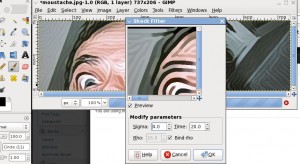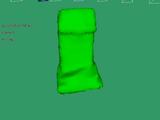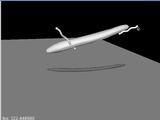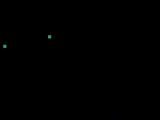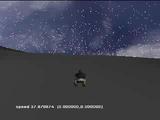Posts Tagged gimp
Game Developer’s Open Source Handbook
I was recently thumbing through some books at the library, and came across the Game Developer’s Open Source Handbook by Steven Goodwin. As a longtime Open Source user, I had to look into this book to Open my eyes to some other projects.
The book as a pretty good intro to the origins of the free and open software movements as well as notes on why and when it is appropriate to use such codes in games. There is also some summaries of open source licenses and notes on when different components using different license can be mixed (and also what is required of you when you are shipping a title).
For the most part, however, I was more concerned with the tools that I hadn’t know about. The book covers development in a GNU/Linux environment. For graphics, there is info on some 2D (e.g., SDL) and 3D engines (CrystalSpace, Irrlicht, and Ogre). I was interested to find out that there was libraries mentioned in there for interactive consoles (OGLCONSOLE) and font handling. I have a small wrapper library for rendering ttf fonts in GL using freetype2, but the FTGL seems like a very worthy alternative.
There is a chapter on audio, something that I have not been too concerned with in the past. I have barely used OpenAL (in my GT racer demo), and have written to the /dev/dsp files in Linux before (NES emulator). I have also used FMOD for mp3 playback in an old bomberman implementation (I believe they have a non-commercial license). The book details some tools for sound conversion, although I pretty much always rely on mplayer, ffmpeg, or gstreamer for video and sound needs.
For physics there are also several choices. ODE is a reasonable solution (discussed in the book), which I have played around with before. I think that Bullet and Box2D were probably too recent to include in the book. The book mentions some of the other libraries useful for collision detection (e.g., OPCODE).
There are also several libraries listed for networking, including SDL_net, torque network library, and clanNetwork. I have personally never used any of these, but I figure they are probably worth looking into (although this is one of the easier areas to write your own).
Scripting was something that I was actually a bit more interested in. The book covers some of the details of using Lua, and possibly Guile (with Python, Java, and some other dynamically typed languages coming in as mentionables). I was a bit dissapointed that there wasn’t more detail in these sections, but I guess that is because it was something that I wanted to know more about.
There was a bunch of other useful utility libraries mixed in, including some for parsing xml (e.g., expat), and several libraries for GUI controls (CEGUI, SDLtk, GG, GUIChan, ParaGUI). After taking a brief look at some of these, I ranked them in this order: GG, GUIchan, paragui, SDLtk. It was interesting to find out about the generic game tree library (GGTL), and internationalization with gettext (something that I haven’t used ever, but the book provided a good enough overview of its capabilites).
Then for tools and production, some of the well known apps were mentioned (e.g., Blender, gimp, audacity, ImageMagick, ffmpeg, mplayer). Some other tools for modeling included JPatch and for film editing there was Kino and Cinepaint.
For the most part, the book brought my attention to a bunch of other middleware-like components that I either wasn’t aware of, or had forgotten about. The above list isn’t exhaustive, and I’m sure there new libraries for each of the components.
As promised
Here it is. Gimp coherence enhancing shock filtering. Install gimp and the related developer tools and build the plug-in (update: I was able to cross-compile it gimp-shocker.exe). Let me know if it works. This is a preliminary version.
Source code:gimp-shock.tar.gz
Gimp – Integrate Normals
Posted by in Projects on November 30th, -0001
This plugin is used to integrate normal maps into depth maps. As input the plugin takes an rgb description of a normal map, and outputs the corresponding depth map. There are two modes of operation.
More details and screenshots to come.
As an example, the program can be used to create normal maps from depth maps, or more importantly depth maps from normal maps.
To illustrate, consider the input depth map:
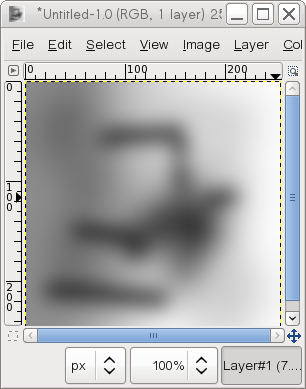
In some vision problems (e.g., shape from shading), you have a normal map and you want to recover the depth map. The plugin can be used to generate the depth map from the normal map(left). Running the plugin once more (with this typical input), we can recover the depth:
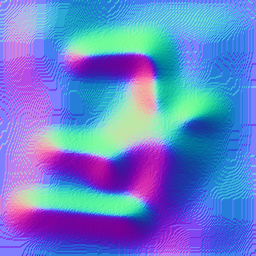
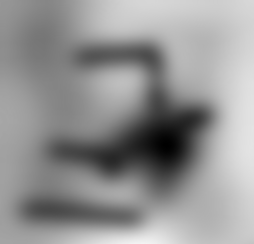
The interface has several modes for packing either the normals or the depth, but if you want to use them, you will need to look at the code. Requires the fast fourier transform library fftw3 to compile and run. Using a sparse linear least squares solver, lsqr, which is included in the source.


